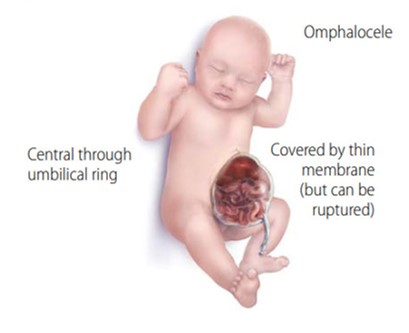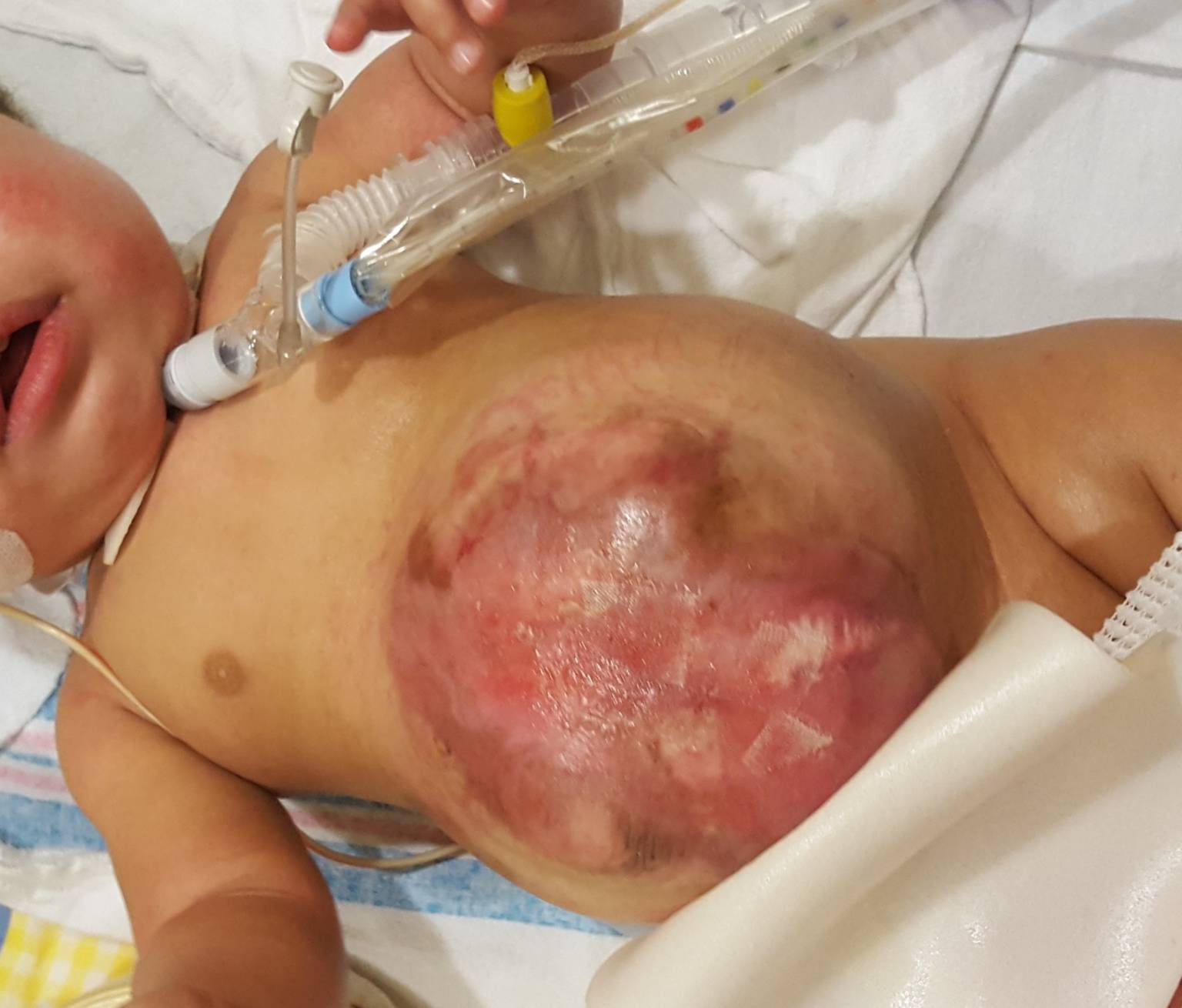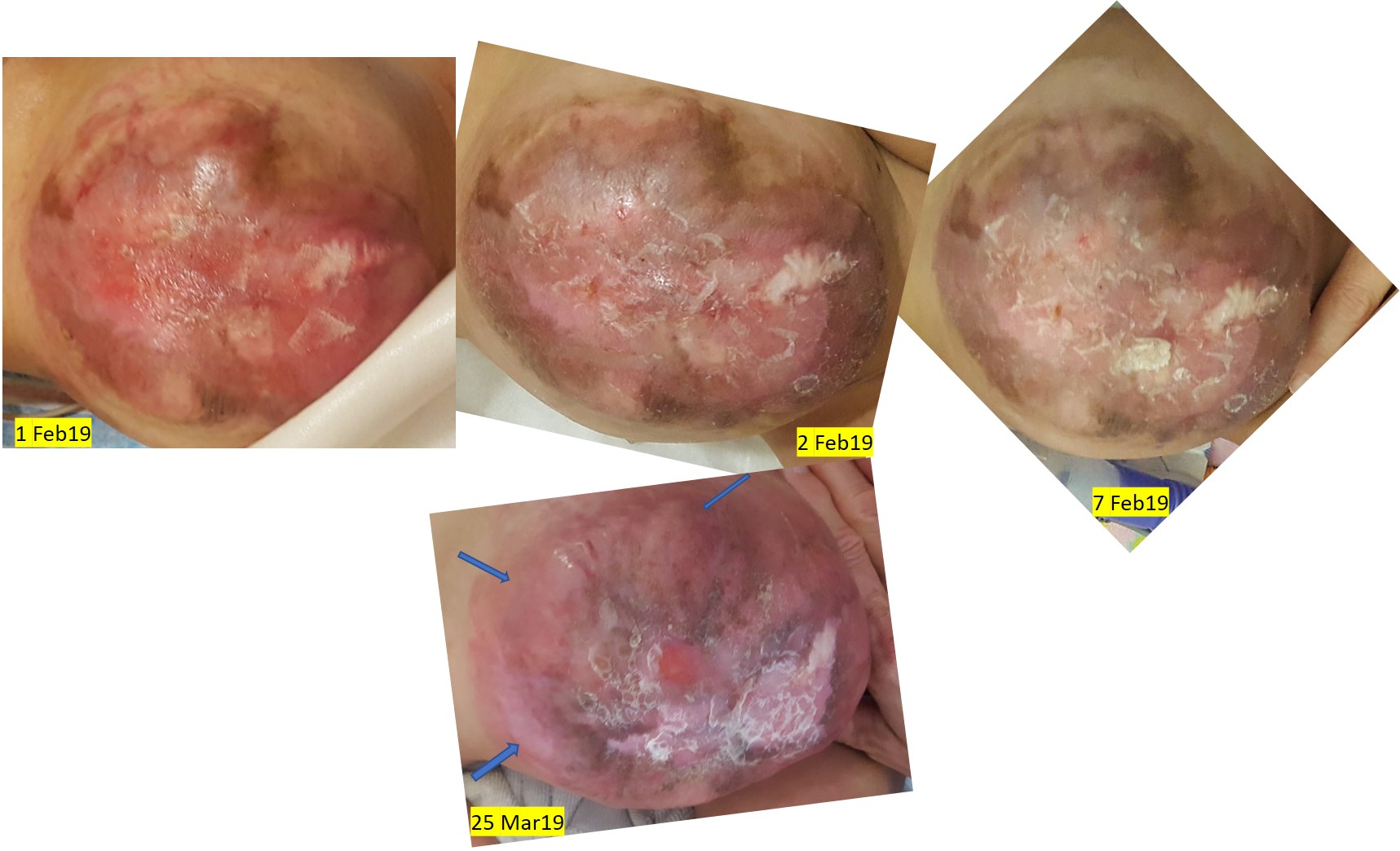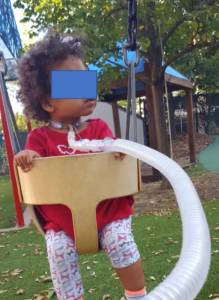Omphalocele
An omphalocele is a birth defect, whereby a newborn infant's intestines are found outside the body due to a split in the abdominal wall at the umbilical (navel) area. (Fig. 1.)

The intestines, covered only by a thin layer of tissue, can protrude through the abdominal wall. Some cases can be managed by tight bandaging, but with the child in this case, because the wound was so large, hospital admission was essential.
Cause
Omphalocele is caused by a defect in the abdominal wall enabling the intestines to protrude through the gap, and is covered with a membrane..
Abdominal wall defects develop as a baby grows inside the mother's womb. During development, the intestines and other organs (liver, bladder, stomach, and ovaries or testes) develop outside the body at first then return inside later. In omphalocele affected infants, the intestines and other organs remain outside the abdominal wall, with a membrane covering them. The exact cause for abdominal wall defects is not known.
There are different sizes and types of omphaloceles, and this child's condition was quite severe. Because it was expected her child would need to stay another year in hospital, her mother contacted me asking if my wheatgrass extract might help hasten the healing of her child's wound. Although I had my doubts, I suggested we see whether or not my wheatgrass extract might hasten her discharge to return home.
Treatment
Omphaloceles are repaired surgically, but, in this case, where the abdominal wall is not strong enough to hold the intestines in, the child must be hospitalised until the wall has regained sufficient strength to hold in the intestines. Although there is a sac (covering) that helps keep the abdominal contents in place, (Fig. 2.) if it is not strong enough, it can burst open leaving the child in danger. There are many other potential complications such as breathing problems because of the child's inability to expand its lungs adequately.
Treatment involves covering the sac with a sterile mesh material, which is then stitched in place to form what is called a silo. As the baby grows over time, the abdominal contents are gradually pushed back into the abdominal cavity. Eventually, when the omphalocele can fit comfortably within the abdominal cavity, the abdomen is closed surgically, which in this case, was unnecessary.
Because this child's abdominal opening was slow at healing, she was kept in hospital. When the first photograph was taken after one year of hospitalisation, surgeons said she would need to stay another year. This was when her mother contacted me to see if wheatgrass extract could hasten the healing process.
Although I had no idea whether the extract would work or not, I knew it would not do any harm to the child. Amazingly, just ONE APPLICATION over the abdominal swelling significantly accelerated the healing process and reduced inflammation. The child was sent home after only 2 more weeks in hospital.
It appears that the abdominal wound would not close due to loss of neurotransmission between dysfunctional peripheral cellular receptors likely caused by surgically damaged cellular receptors in the region causing blockage of transmission to the brain. However, wheatgrass extract, via the broad spectrum of ligands it contains, appears to have re-connected blocked cellular receptors to the brain which has accelerated healing of the child's wound. (See "How wheatgrass extract heals.")



Dr. Chris Reynolds. M.B.,B.S.
Queensland.
Australia.